Many industrialized countries, including Japan, are entering the stage of an aging society. While the average life expectancy continues to increase, there is a growing interest in not just increasing the average life expectancy, but also how to extend what is called “healthy life expectancy.” The Ministry of Health, Labour and Welfare's “Health Japan 21 (the 3rd term)” strategy calls for the extension of healthy life expectancy as its first basic direction.
As a food company, the Nissui Group has a responsibility to deliver health to everyone through food. We are committed to research and development of healthy ingredients and products that make use of the bounty of the sea, and contribute to solving a variety of challenges when it comes to health.
Ministry of Health, Labour and Welfare's “Health Japan 21 (the 3rd term) (in Japanese)”
National Institute of Health and Nutrition
The Nissui Group states as follows in its Declaration on Action of Sustainability: “We utilize bounty of the sea and provide the delights of foods and the rich and healthy lives through the innovation.” Based on this approach, we will take advantage of our unique technology and bring health to people around the world from sustainable marine resources.
Declaration on Action of Sustainability
The Nissui Group has set the resolution of health issues as one of its long-term priority management themes until 2030. We will launch projects in-house and seek to expand Nissui products in the field of health.
Long-Term Vision and Medium-Term Management Plan
Material Issue Promotion Framework
The targets and results specified in the long-term vision, “GOOD FOODS 2030,” and in the Medium-Term Management Plan, “GOOD FOODS Recipe1” and “GOOD FOODS Recipe2” are as follows. Nissui intends to continue development of designated Health Category Products by 2030, building on the strengths it has accumulated since its establishment, such as access to marine raw materials and R&D.
| Indicators | Scope | Results | KPI | ||||
|---|---|---|---|---|---|---|---|
| FY2022 | FY2023 | FY2024 | Target by 2024 Medium-Term Management Plan "GOOD FOODS Recipe1" |
Target by 2027 Medium-Term Management Plan "GOOD FOODS Recipe2" |
Target by 2030 Long-Term Vision "GOOD FOODS 2030" |
||
| Sales of designated Health Category Products (Compared to FY2021) |
The Nissui Group | 100% | 100% | 110% | Expand by 30% |
Expand by 100% |
Expand by 200% |
Products that fall under the category of “Broader perspectives of health (Note)” defined by the Nissui Group, and support customers’ healthy lifestyle through innovative food solutions verified by either the national government, academic societies, or Nissui (examples: EPA/DHA, Protein of Fast-twitch skeletal muscles, salt reduction).
(Note) Broader perspectives of health: A health concept aligned with either (1) target items set forth in “Healthy Japan 21” by the Ministry of Health, Labour and Welfare, or (2) “Recommendations for Extending Healthy Life Expectancy Based on Cross-Disease Evidence” by the Japan Health Research Promotion Bureau.
![[Image] Health Category Products](/assets/img/site/218/218_434_img-01e.webp)
EPA is a type of n-3 highly unsaturated fatty acid found abundantly in the fat of fish, and is an essential fatty acid that the body cannot easily produce. Using our own food processing technology, Nissui has developed fish sausages and other healthy products that contain EPA and other functional ingredients derived from fish, which we then offer to our customers. In addition, Nissui contributed to the development of the world's first EPA pharmaceuticals (therapeutic agents for hyperlipidemia and arteriosclerosis obliterans) through joint research with Chiba University School of Medicine since the 1980s and with Mochida Pharmaceutical Co., Ltd. Currently, Nissui is responsible for supplying raw materials for high-purity EPA pharmaceutical products.
Excessive sodium intake raises the risk of diseases such as hypertension, stroke, and stomach cancer. Since processed marine food are associated with high salt content, we have started basic research on aroma and taste. We are working on the development and practical application of ingredients that provide a strong salty taste and methods for manufacturing products that do not lose their flavor despite a reduction in the salt content.
DHA, like EPA, is a type of n-3 highly unsaturated fatty acid found abundantly in the fat of fish, and is an essential fatty acid that is not readily produced by the body. It is found in abundance in the human brain and in the nervous system, and is considered to be a particularly important nutrient for children during their developmental stages. At Nissui, we utilize DHA as a raw material for infant formula and also provide DHA drinks that are easy for children to drink.
In addition, decline in cognitive function is also a challenge for an increasingly aging society. DHA has been reported to have a positive effect on the maintenance of cognitive functions, and Nissui has developed a DHA-based drink that takes advantage of this feature. By utilizing the technology we have developed to suppress the odor of fish oil and the processing technology to suppress the progress of oxidation, we have created a product that is easy to incorporate into daily life.
One health issue faced by an aging society is the problem of sarcopenia, which is the loss of muscle mass due to aging, and frailty - a decline in physical function. Our research on the fast-twitch skeletal muscle protein found in Alaska pollock has shown that eating pollock protein increases muscle mass and strength, and we are developing products that use these ingredients.
Cité Marine S.A.S., a subsidiary of the Nissui Group located in France, is engaged in the production and sales of plant-based protein products that use agricultural products.
![[Photo] Alternative Protein Products](/assets/img/site/218/218_397_img-01.webp)
The Nissui Group states in Article 1-7 of its “Quality Assurance Code” that: “Information about the origin and source of the raw materials, allergenic substances, nutritional components, and production processes etc. shall be provided correctly and clearly to the consumers.”
Furthermore, we have established a “Basic Policy” within the “Standard of labeling” in the “Quality Assurance Standards.” The “Standard of labeling” also sets various other standards for labeling, including product names, product descriptions, bulk labeling, nutritional information labeling, and allergy labeling.
In addition, the Ethical Behavior Standards states in the section entitled “Compliance with the Act against Unjustifiable Premiums and Misleading Representations” that: “We will comply with legal requirements when offering goods, money, or other premiums to customers. In addition, we will advertise and label our products and services truthfully and will not mislead consumers.
| Item | Law |
|---|---|
| Product claims labeling | Act against Unjustifiable Premiums and Misleading Representations, Unfair Competition Prevention Act, Trademark Act, Design Act, Copyright Act, Fair Competition Code (other than bulk labeling), Health Promotion Act, Local government ordinances |
| Bulk labeling, allergy labeling | Food Labeling Act, Measurement Act, Fair Competition Code (related to bulk labeling) |
| Caution indications, warning indications | Product Liability Act |
| Identification labeling of containers and packaging | Containers and Packaging Recycling Law, Law for Promotion of Effective Utilization of Resources |
| Pharmaceutical labeling | Pharmaceutical and Medical Device Act |
Product information is communicated to customers through product packaging. We have established internal standards for conveying product information with an emphasis on easy-to-understand and easy-to-read packaging.
Allergens, including the 28 required to be listed, are displayed in large, easy-to-read colors also outside the batch labeling of ingredients.
In addition, our fish sausages and paste products do not contain eggs. For those who are allergic to eggs, we put an “egg free” mark on the package to inform them that our products are safe to eat.
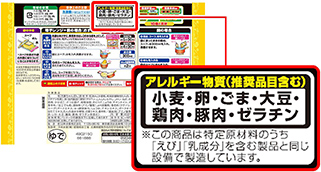
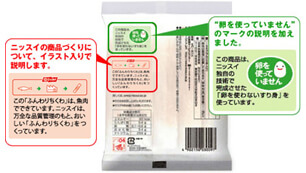
We provide nutritional information on product packaging and on our website to help consumers make informed healthy food choices.
| Name | Label | Details | Product Examples |
|---|---|---|---|
| Foods for Specified Health Use (“Tokuho”) |  |
Includes products that have been scientifically validated to help maintain and improve health. The Japanese government rigorously reviews efficacy and safety, with the Consumer Affairs Agency granting approval for each specific item. | Click here for details (in Japanese) |
| Food with Functional Claims | Labeled as “Food with Functional Claims” on packaging. | Foods that are labeled with a functionality based on scientific evidence, under the responsibility of the business operator. | Click here for details (in Japanese) |
| Fast-Twitch Skeletal Muscle Protein | 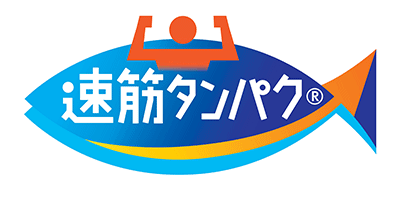 |
Used in products like fish sausage and fish cakes, utilizing fast-twitch skeletal muscle protein from Alaska pollock. | Click here for details (in Japanese) |
| Salt Reduction |  |
Used in a wide range of products including canned goods, fish sausage, and fish cakes, indicating reduced sodium content. | Click here for details (in Japanese) |
| Tomato Lycopene Gardenia Plant-Based Colorants | 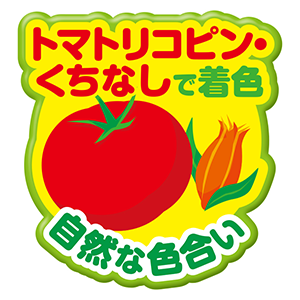 |
Used in fish sausage. | Click here for details (in Japanese) |
Nutrient profiling is a method that involves evaluating the nutritional components present in foods and assigning scores based on their nutritional value. By visualizing the nutritional value, customers can quickly discern which foods are healthy, aiding them in making informed choices.
Nissui Group companies outside Japan have adopted nutritional scoring systems such as Nutri-Score. Cité Marine S.A.S. (France), a producer and distributor of food products, has successfully implemented Nutri-Score labels on the packaging of most of its National Brand (NB) products. All of Cité Marine's NB products are graded A or B. In addition, other Group companies are actively improving the availability of this information on their websites.
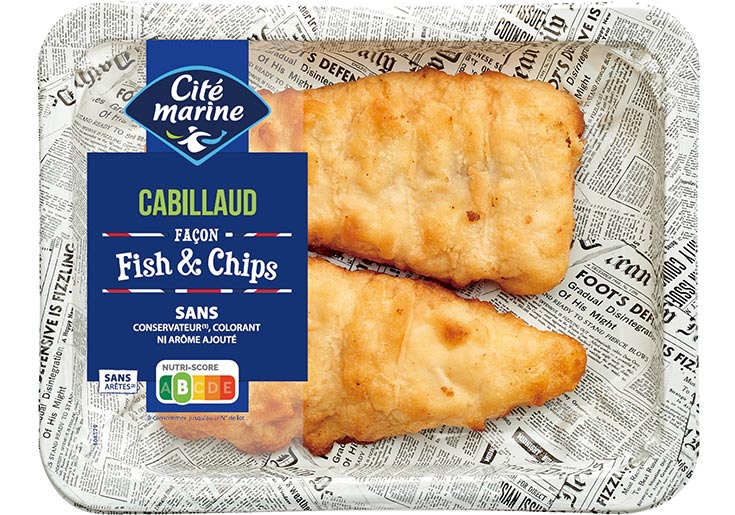
Cité Marine's packaging example with Nutri-Score
When creating illustrations of product materials, etc., we take care to correctly depict the ingredients. To avoid depicting the wrong type of product or ingredient, we always check the actual ingredients before representing them in an illustration.
(Before modification) To identify it more easily as cheese, holes were added to the surface.
(After modification) After checking, it was found that the actual cheese used was one without holes in its surface. Therefore, the illustration was corrected to show cheese without holes.

In the “Basic Quality Control Seminar”, one of the employee education programs provided by the Quality Assurance Department, we also conduct training on labeling standards once a year.
Training Sponsored by the Quality Assurance Department
Through the acquisition and renewal of FSSC22000 and other certifications, we also undergo external inspections for our labeling.
International Standards Certification for Food Safety Management Systems
We have established a Whistleblowing System to identify any violations of standards.
Initiative to Identify Compliance Issues “Overview of Whistleblowing System”